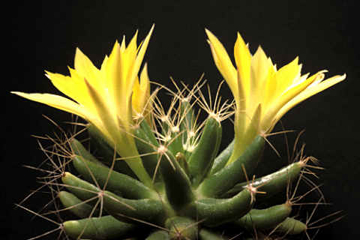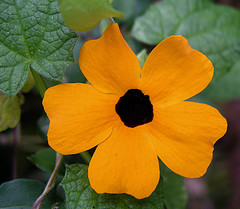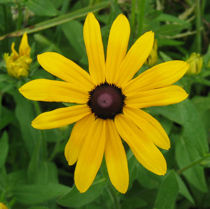I've been getting into a gentle tizz over at Botany Photo of the Day and The Human Flower Project1 on the subject of names. Latin names. OK, go ahead and mock; most people do. But the fact is that, pace Wittgenstein, names do have meaning inasmuch as they allow us, in the absence of the thing itself, potentially to agree on what that thing is.

Over at the Human Flower Project, Julie is merely perplexed by trying to work out the literal meaning of some Latin names. That's easy to understand. It is a different language, and one has to learn how it works. Echinocereus could, at a stretch, be a hedgehog carrying a candle, but it is much more likely to be a candle bearing spines. At least Julie is trying (and I'm glad she wasn't growing Mammillaria longimamma).
But when Daniel at BPOTD refers to a plant as giant rhubarb or Chilean rhubarb, I get a little upset because the plant he shows is not a rhubarb, or even closely related to rhubarb (and to be fair, he was contrite about using the common name). If you were hungry, came across it, knew it as a rhubarb and also knew enough to cook rhubarb first, it still might not do you any good. The common name also begs the question of just what plant is in the photo. Originally identified as Gunnera manicata (the name on its label) it has since been re-identified as Gunnera tinctoria. Why? Among other reasons, because G. tinctoria is smaller than G. manicata which, as it happens, is also known as giant rhubarb; I am not happy with there being something bigger than a giant, among gunneras or anything else.
In other words, giant rhubarb does nothing to identify the plant species in question. Gunnera tinctoria does. (So does G. manicata, of course, but wrongly.)
Another visitor to BPOTD, however, disagrees: "Once seemingly inappropriate common names are in use that use is a part of reality. Leaving them out of an account is an omission of facts about the plant in question."
As I said there, that simply is not true. Which of these flowers is black-eyed Susan?


Both, obviously, or I wouldn't be bothering.
It isn't as if the tyranny of the majority operates either. The world didn't vote on what the name of either of those plants should be (in English). And even if it had, who would enforce the decision? But we could agree that, in order to discuss them, we could call one Rudbeckia hirta and the other Thunbergia alata. Botanical taxonomists would still discuss whether some names were correct and proper, but that would be a specialized discussion for the good of all, and the number of cases in dispute is actually tiny.
I like Latin names because once you have cracked the code, they are descriptive. They give an indication of relationships too, which can be handy. I've never understood, for example, how the same plant can be both a chick pea and a garbanzo bean. Is it a pea or a bean? Is a sweet pea sweet? Is it even edible? And back with the rhubarbs, false rhubarb is a real rhubarb (Rheum rhaponticum), but I'd sooner eat garden rhubarb (Rheum rhabarbarum).
In the end, names matter because they aid accurate communication. Latin names happen to make that communication easiest.
Mammillaria longimamma photo from Hobby Fotografie. Rudbeckia hirta photo from Shooting Star Native Seeds.1 (Slightly mislabelled) Thunbergia alata photo from petrichor on flickr.
Webmentions
Webmentions
Webmentions allow conversations across the web, based on a web standard. They are a powerful building block for the decentralized social web.
If you write something on your own site that links to this post, you can send me a Webmention by putting your post's URL in here:
Comments